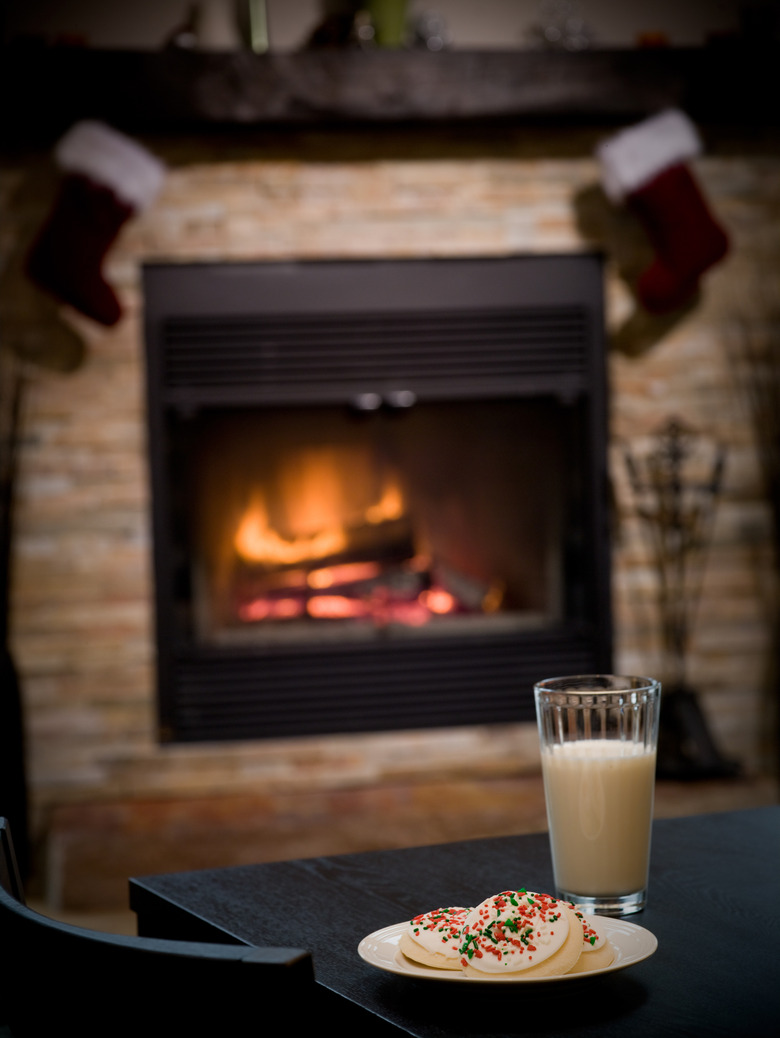Ohio Fireplace Building Codes
A fireplace can reduce heating bills and add a romantic touch to your home or business. They can also create a fire hazard if not built correctly. For this reason, the Ohio Building Codes outline rules and regulations that must be followed when installing a fireplace. Most fireplaces will fall under the category of masonry fireplaces as outlined in code 2111.1, which defines masonry fireplaces as any fireplace that is constructed of masonry or concrete.
Step 1
According to Ohio building code 2111.2, footings and foundations for fireplaces and chimneys must be composed of concrete or solid masonry. This concrete or masonry must be at least 12 inches thick and extend at least 6 inches past the face of the fireplace or fireplace foundation wall. This guideline applies to all sides. These footings must be installed on undisturbed and natural earth or be filled below frost depth. If frost is not a risk, the footing must be no less than 12 inches under finished grade.
Seismic Anchorage
Step 1
Code 2111.4 pertains to the seismic anchorage of category D masonry and concrete chimneys. This code states that all category D chimneys must be anchored to the ceiling, roof line, or at each floor at more than 6 ft. above grade. This excludes chimneys that are constructed and enclosed completely within exterior walls.
Step 2
- According to Ohio building code 2111.2, footings and foundations for fireplaces and chimneys must be composed of concrete or solid masonry.
- This concrete or masonry must be at least 12 inches thick and extend at least 6 inches past the face of the fireplace or fireplace foundation wall.
Firebox Walls
Step 1
According to Ohio building code 2111.5, fireboxes must be made out of solid masonry units, stone, concrete or masonry units that are grouted solid. When firebrick lining of at least 2 inches is used, the back and sidewalls must be a minimum of 8 in. of solid masonry. This also includes the lining. If no lining is present, then the thickness of back walls and sidewalls must be at least 10 inches of solid masonry. Fireboxes must be laid with medium duty refractory mortar.
Firebox Dimensions
Step 1
Ohio building code 2111.6 states that the firebox must be a minimum of 20 inches deep. The throat of the firebox must be at least 8 in. above the opening and no less than 4 in. in depth. The cross-sectional area above the firebox must not be less than the cross-sectional area of the flue. Rumford fireplaces are excluded. These should have fireboxes that are at least 12 in. deep and one-third of the width of the opening of the fireplace.
Step 2
- According to Ohio building code 2111.5, fireboxes must be made out of solid masonry units, stone, concrete or masonry units that are grouted solid.
- If no lining is present, then the thickness of back walls and sidewalls must be at least 10 inches of solid masonry.
Lintel and Throat
Step 1
Ohio building code 2111.7 pertains to the lintel and throat of the fireplace. The lintel must be a noncombustible material and bearing length on each end of the opening must be 4 in. The throat or damper must be a minimum of 8 in. above the opening of the fireplace.
Smoke Chamber Walls
Step 1
Code 2111.8 states that smoke chamber walls must be solid masonry tubes, stone, concrete or hollow masonry tubes. Corbeling cannot leave the unit cores exposed to the inside of the smoke chamber. Inside, the masonry must be parged smooth. If there is no lining, minimum thickness on all sides must be 8 in. of solid masonry. If lining is at least 2 in. thick, total minimum thickness of all sides must be at least 6 inches of solid masonry. This includes the lining.
Step 2
- Ohio building code 2111.7 pertains to the lintel and throat of the fireplace.
- thick, total minimum thickness of all sides must be at least 6 inches of solid masonry.
Hearth and Hearth Extension
Step 1
Code 2111.9 states that the hearth and hearth extension must be composed of concrete or masonry and supported by noncombustible materials. They must also be able to carry their own weight and probable loads. Code 2111.10 states that the hearth extension should extend 16 in. or more in front of the fireplace opening, and 8 in. or more past each side of the opening. If the opening is 6 square ft. or larger, the hearth extension must extend at least 20 in. in front of the opening and 12 in. past each side.
Step 2
- Code 2111.9 states that the hearth and hearth extension must be composed of concrete or masonry and supported by noncombustible materials.
- or larger, the hearth extension must extend at least 20 in.
Fireplace Clearance
Step 1
Building code 2111.11 pertains to the clearance of the fireplace in relation to any combustible materials, including exterior walls. Combustible materials should be at least 2 inches from the front of the fireplace and 4 inches from the back of the fireplace.
Fireplace Fireblocking
Step 1
Ohio building code 2111.12 states that any spaces between the fireplace and floors or ceilings that the fireplace passes through must be fireblocked with materials that are noncombustible and fastened in place. Spaces between wood joists, headers and beams must be placed only on metal or metal lath strips that are laid across the spaces between any combustible material and the chimney.
Exterior Air
Step 1
According to building code 2111.13, masonry and factory-built fireplaces must have an exterior air supply to ensure that fuel combustion is adequate. Exceptions apply to rooms that are mechanically ventilated and controlled.
